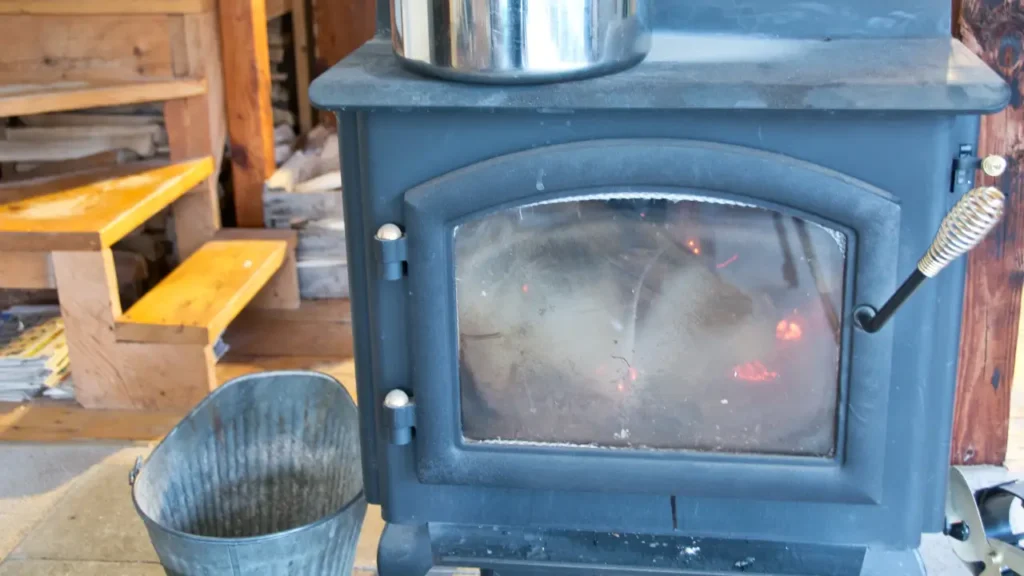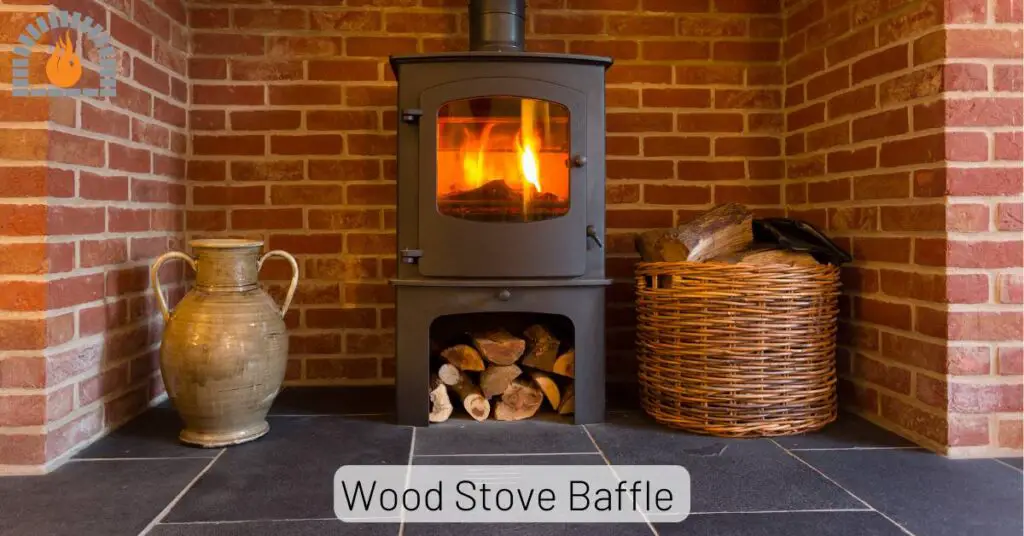If you own a woodstove, you know how cozy it feels to watch the flames dance behind that clear glass window. But let’s be honest: the soot buildup on woodstove glass can quickly turn that relaxing view into a murky mess.
Whether it’s from incomplete combustion or poor-quality wood, the dark stains are frustrating and persistent.
Luckily, with a bit of effort and the right techniques, you can keep your woodstove glass spotless all season long. In this article, we’ll cover easy, practical cleaning tips to help you maintain your stove’s performance and beauty. Let’s dive in!
Why Woodstove Soot on Glass?
Soot forms when wood doesn’t burn completely, leaving behind carbon deposits. Poor-quality wood or the use of green (unseasoned) wood increases smoke and soot production. While some of this soot exits through the venting system, some adheres to the stove glass, resulting in soot buildup on the glass.
Also, if the airflow inside the stove is insufficient, it can cause inefficient burning and more residue on the glass and sometimes burning too much wood at once lowers combustion efficiency, leading to more soot.

Common Causes of Soot on Wood Stove Glass
1. Burning Unseasoned or Wet Wood
- Issue: Freshly cut or unseasoned wood contains too much moisture, which leads to incomplete combustion. This results in excess smoke and soot.
- Solution: Use properly seasoned wood with moisture content below 20%. A moisture meter can help ensure your wood is dry enough.
2. Insufficient Airflow
- Issue: If the air vents are closed too much, it limits oxygen, causing the fire to smolder instead of burn efficiently. This creates excess soot.
- Solution: Adjust the air controls to ensure there is enough oxygen entering the firebox for clean burning.
3. Low Burning Temperatures
- Issue: Fires that burn too slowly or at low temperatures tend to produce more smoke and soot.
- Solution: Allow the fire to reach a higher temperature before reducing airflow. Using smaller logs can also help increase combustion efficiency.
4. Dirty or Blocked Chimney
- Issue: A chimney that’s blocked or full of creosote buildup prevents proper draft, leading to incomplete combustion and soot on the glass.
- Solution: Clean your chimney regularly to maintain a good draft and reduce soot production.
5. Poor Wood Stove Design
- Issue: Older or poorly designed stoves may not allow proper airflow over the glass, increasing the chances of soot buildup.
- Solution: Consider stoves with an air wash system, which directs airflow over the glass to keep it clean.
6. Starting Fires with Paper or Non-Wood Materials
- Issue: Burning paper, cardboard, or treated wood releases chemicals and excess ash that can cause soot to stick to the glass.
- Solution: Use fire starters or kindling instead of paper to ignite the fire.
7. Overloading the Firebox
- Issue: Packing too much wood into the firebox reduces airflow, causing the fire to smolder and produce soot.
- Solution: Load the firebox in moderation, leaving space for air to circulate around the logs.
Risks of Leaving Woodstove Glass Uncleaned
-
Dirty glass blocks the view, making the stove look unattractive.
-
Soot buildup can reduce the heat radiated through the glass, affecting the overall efficiency of your stove.
-
If left for too long, soot can etch into the glass, creating permanent marks that are nearly impossible to remove.
Best DIY Methods to Clean Soot Off Woodstove Glass
- Using Newspaper and Ash
- Dampen a piece of newspaper, dip it in wood ash, and gently scrub the glass. This eco-friendly method works surprisingly well for light soot.
- Vinegar and Water Solution
- Mix equal parts vinegar and water in a spray bottle. Spray the solution on the glass and wipe with a microfiber cloth.
- Baking Soda Paste for Tough Stains
- Combine baking soda with water to create a paste. Apply it to the glass and let it sit for a few minutes before scrubbing.
How to Clean Woodstove Glass: Step-by-Step Guide
- Step 1 – Wait for the Glass to Cool Down
- Never clean the glass while it’s hot. Wait for the stove to cool completely to prevent accidents.
- Step 2 – Wipe Off Loose Ash First
- Use a dry cloth to remove loose ash and dust. This step makes it easier to target stubborn soot stains later.
- Step 3 – Apply a Cleaner or DIY Paste
- You can use a commercial glass cleaner or make a DIY paste using water and wood ash. Both methods are effective in loosening soot.
- Step 4 – Scrub Gently to Avoid Scratching
- Use a soft scrub pad or newspaper to clean the surface. Avoid abrasive materials that might scratch the glass.
- Step 5 – Wipe with a Microfiber Cloth for a Streak-Free Finish
- After scrubbing, wipe the glass with a clean microfiber cloth to eliminate streaks and residue.
Common Mistakes to Avoid When Cleaning Woodstove Glass
- Attempting to clean hot glass can lead to cracks and burns. Always wait for it to cool.
- Avoid steel wool or other abrasive materials that can permanently damage the glass.
- A little maintenance goes a long way. Clean the glass regularly to prevent buildup.
You May Also Like To Read:
FAQs
How often should I clean my woodstove glass?
Clean it every few days during heavy use, depending on the soot buildup.
Can I use regular window cleaner on woodstove glass?
No, regular cleaners may not be effective and could leave streaks. Use cleaners designed for woodstove glass or a DIY solution.
What is the safest way to remove soot without scratching the glass?
Use a damp newspaper or soft scrub pad with ash to avoid scratches.
Why does my woodstove glass get dirty so quickly?
Burning unseasoned wood or poor airflow can cause quicker soot buildup
Are there any eco-friendly alternatives for cleaning soot off glass?
Yes! Vinegar, baking soda, and ash are great non-toxic options.
Affiliate Disclosure: Fireplaceadviser.com is a participant in the Amazon Services LLC Associates Program. We may earn a commission when you click on certain links on this site and purchase.

Hello!! I am Jamal Khan. I often fix my home electric heaters and gas stove problems and research the common issues in the heating units to improve my knowledge and expertise. The aim of establishing fireplaceadviser.com is to share my expertise and knowledge with my audience.
















